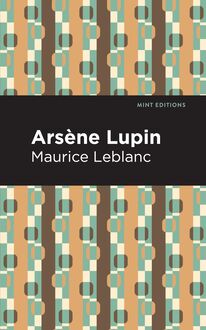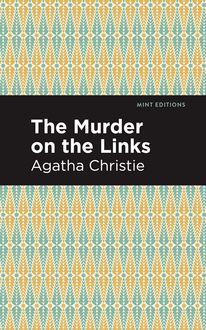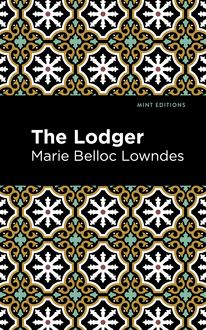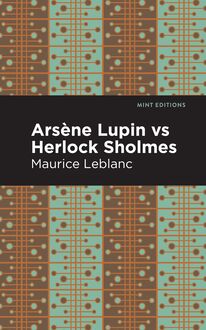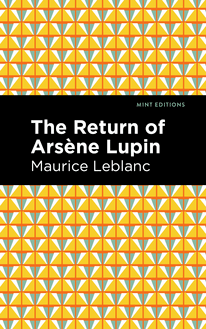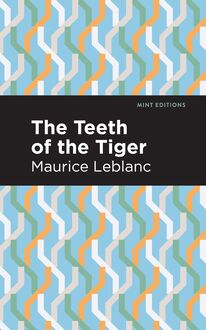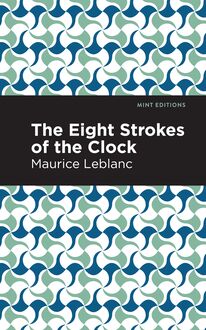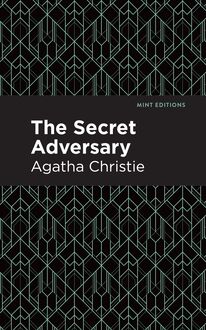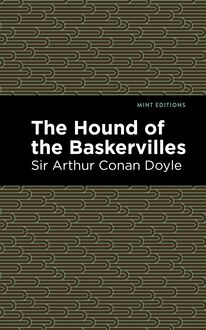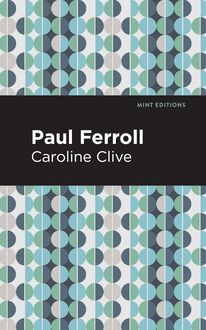-
 Univers
Univers
-
 Ebooks
Ebooks
-
 Livres audio
Livres audio
-
 Presse
Presse
-
 Podcasts
Podcasts
-
 BD
BD
-
 Documents
Documents
-
- Cours
- Révisions
- Ressources pédagogiques
- Sciences de l’éducation
- Manuels scolaires
- Langues
- Travaux de classe
- Annales de BEP
- Etudes supérieures
- Maternelle et primaire
- Fiches de lecture
- Orientation scolaire
- Méthodologie
- Corrigés de devoir
- Annales d’examens et concours
- Annales du bac
- Annales du brevet
- Rapports de stage
La lecture à portée de main
Vous pourrez modifier la taille du texte de cet ouvrage
Découvre YouScribe en t'inscrivant gratuitement
Je m'inscrisDécouvre YouScribe en t'inscrivant gratuitement
Je m'inscrisEn savoir plus
Vous pourrez modifier la taille du texte de cet ouvrage
En savoir plus

Description
The Diamond Master (1909) is a mystery novel by Jacques Futrelle. Published at the height of his career as a leading popular detective and science fiction writer, The Diamond Master was adapted for two silent films in 1921 and 1929. Celebrated for his brisk storytelling and mastery of suspense, Jacques Futrelle was lost at sea on April 15, 1912 while returning from Europe on the HMS Titanic. His wife, who survived the disaster, had his last book dedicated to “the heroes of the Titanic.” “A minute or more passed, a minute of wonder, admiration, allurement, but at last he ventured to lift the diamond from the box. It was perfect, so far as he could see; perfect in cutting and color and depth, prismatic, radiant, bewilderingly gorgeous. Its value? Even he could not offer an opinion...” An expert jeweler, even Harry Latham is forced to admit he has never in his life seen such a diamond. It arrived in an unmarked package with neither message nor return address, a rather casual presentation for such an invaluable object. Unable to appraise it, let alone uncover its origins, he seeks the advice of other experienced jewelers. Soon, it is determined that five flawless diamonds have been delivered to his colleagues across the United States, prompting confusion and fear as to the intentions of the anonymous sender. With a beautifully designed cover and professionally typeset manuscript, this edition of Jacques Futrelle’s The Diamond Master is a classic of American detective fiction reimagined for modern readers.
Sujets
Informations
| Publié par | Mint Editions |
| Date de parution | 16 novembre 2021 |
| Nombre de lectures | 0 |
| EAN13 | 9781513223360 |
| Langue | English |
| Poids de l'ouvrage | 1 Mo |
Informations légales : prix de location à la page 0,0350€. Cette information est donnée uniquement à titre indicatif conformément à la législation en vigueur.
Extrait
The Diamond Master
Jacques Futrelle
The Diamond Master was first published in 1909.
This edition published by Mint Editions 2021.
ISBN 9781513224961 | E-ISBN 9781513223360
Published by Mint Editions®
minteditionbooks.com
Publishing Director: Jennifer Newens
Design & Production: Rachel Lopez Metzger
Project Manager: Micaela Clark
Typesetting: Westchester Publishing Services
C ONTENTS
I . T HE F IRST D IAMOND
II . T WEEDLEDUM AND T WEEDLEDEE
III . T HURSDAY AT T HREE
IV . T HE U NLIMITED S UPPLY
V . T HE A STUTE M R. B IRNES
VI . T HE M YSTERIOUS W OMAN
VII . A W INGED M ESSENGER
VIII . S OME C ONJECTURES
IX . A ND M ORE D IAMONDS!
X . T HE B IG G AME
XI . T HE S ILENT B ELL
XII . T HE T HIRD D EGREE
XIII . M R. C ZENKI A PPEARS
XIV . C AUGHT IN THE N ET
XV . T HE T RUTH IN P ART
XVI . M R. C ZENKI E XPLAINS
XVII . T HE G REAT C UBE
I
T HE F IRST D IAMOND
T here were thirty or forty personally addressed letters, the daily heritage of the head of a great business establishment; and a plain, yellow-wrapped package about the size of a cigarette-box, some three inches long, two inches wide and one inch deep. It was neatly tied with thin scarlet twine, and innocent of markings except for the superscription in a precise, copperplate hand, and the smudge of the postmark across the ten-cent stamp in the upper right-hand corner. The imprint of the cancellation, faintly decipherable, showed that the package had been mailed at the Madison Square substation at half-past seven o’clock of the previous evening.
Mr. Harry Latham, president and active head of the H. Latham Company, manufacturing jewelers in Fifth Avenue, found the letters and the package on his desk when he entered his private office a few minutes past nine o’clock. The simple fact that the package bore no return address or identifying mark of any sort caused him to pick it up and examine it, after which he shook it inquiringly. Then, with kindling curiosity, he snipped the scarlet thread with a pair of silver scissors, and unfolded the wrappings. Inside was a glazed paper box, such as jewelers use, but still there was no mark, no printing, either on top or bottom.
The cover of the box came off in Mr. Latham’s hand, disclosing a bed of white cotton. He removed the downy upper layer, and there—there, nestling against the snowy background, blazed a single splendid diamond, of six, perhaps seven, carats. Myriad colors played in its blue-white depths, sparkling, flashing, dazzling in the subdued light. Mr. Latham drew one long quick breath, and walked over to the window to examine the stone in the full glare of day.
A minute or more passed, a minute of wonder, admiration, allurement, but at last he ventured to lift the diamond from the box. It was perfect, so far as he could see; perfect in cutting and color and depth, prismatic, radiant, bewilderingly gorgeous. Its value? Even he could not offer an opinion—only the appraisement of his expert would be worth listening to on that point. But one thing he knew instantly— in the million-dollar stock of precious stones stored away in the vaults of the H. Latham Company, there was not one to compare with this.
At length, as he stared at it fascinated, he remembered that he didn’t know its owner, and for the second time he examined the wrappings, the box inside and out, and finally he lifted out the lower layer of cotton, seeking a fugitive card or mark of some sort. Surely the owner of so valuable a stone would not be so careless as to send it this way, through the mail—unregistered—without some method of identification! Another sharp scrutiny of box and cotton and wrappings left him in deep perplexity.
Then another idea came. One of the letters, of course! The owner of the diamond had sent it this way, perhaps to be set, and had sent instructions under another cover. An absurd, even a reckless thing to do, but—! And Mr. Latham attacked the heap of letters neatly stacked up in front of him. There were thirty-six of them, but not one even remotely hinted at diamonds. In order to be perfectly sure, Mr. Latham went through his mail a second time. Perhaps the letter of instructions had come addressed to the company, and had gone to the secretary, Mr. Flitcroft.
He arose to summon Mr. Flitcroft from an adjoining room, then changed his mind long enough carefully to replace the diamond in the box and thrust the box into a pigeonhole of his desk. Then he called Mr. Flitcroft in.
“Have you gone through your morning mail?” Mr. Latham inquired of the secretary.
“Yes,” he replied. “I have just finished.”
“Did you happen to come across a letter bearing on—that is, was there a letter today, or has there been a letter of instructions as to a single large diamond which was to come, or had come, by mail?”
“No, nothing,” replied Mr. Flitcroft promptly. “The only letter received today which referred to diamonds was a notification of a shipment from South Africa.”
Mr. Latham thoughtfully drummed on his desk.
“Well, I’m expecting some such letter,” he explained. “When it comes please call it to my attention. Send my stenographer in.”
Mr. Flitcroft nodded and withdrew; and for an hour or more Mr. Latham was engrossed in the routine of correspondence. There was only an occasional glance at the box in the pigeonhole, and momentary fits of abstraction, to indicate an unabated interest and growing curiosity in the diamond. The last letter was finished, and the stenographer arose to leave.
“Please ask Mr. Czenki to come here,” Mr. Latham directed.
And after a while Mr. Czenki appeared. He was a spare little man, with beady black eyes, bushy brows, and a sinister scar extending from the point of his chin across the right jaw. Mr. Czenki drew a salary of twenty-five thousand dollars a year from the H. Latham Company, and was worth twice that much. He was the diamond expert of the firm; and for five or six years his had been the final word as to quality and value. He had been a laborer in the South African diamond fields—the scar was an assegai thrust—about the time Cecil Rhodes’ grip was first felt there; later he was employed as an expert by Barney Barnato at Kimberly, and finally he went to London with Adolph Zeidt. Mr. Latham nodded as he entered, and took the box from the pigeonhole.
“Here’s something I’d like you to look at,” he remarked.
Mr. Czenki removed the cover and turned the glittering stone out into his hand. For a minute or more he stood still, examining it, as he turned and twisted it in his fingers, then walked over to a window, adjusted a magnifying glass in his left eye and continued the scrutiny. Mr. Latham swung around in his chair and stared at him intently.
“It’s the most perfect blue-white I’ve ever seen,” the expert announced at last. “I dare say it’s the most perfect in the world.”
Mr. Latham arose suddenly and strode over to Mr. Czenki, who was twisting the jewel in his fingers, singling out, dissecting, studying the colorful flashes, measuring the facets with practised eyes, weighing it on his finger-tips, seeking a possible flaw.
“The cutting is very fine,” the expert went on. “Of course I would have to use instruments to tell me if it is mathematically correct; and the weight, I imagine, is—is about six carats, perhaps a fraction more.”
“What’s it worth?” asked Mr. Latham. “Approximately, I mean?”
“We know the color is perfect,” explained Mr. Czenki precisely. “If, in addition, the cutting is perfect, and the depth is right, and the weight is six carats or a fraction more, it’s worth—in other words, if that is the most perfect specimen in existence, as it seems to be, it’s worth whatever you might choose to demand for it—twenty, twenty-five, thirty thousand dollars. With this color, and assuming it to be six carats, even if badly cut, it would be worth ten or twelve thousand.”
Mr. Latham mopped his brow. And this had come by mail, unregistered!
“It would not be possible to say where—where such a stone came from—what country?” Mr. Latham inquired curiously. “What’s your opinion?”
The expert shook his head. “If I had to guess I should say Brazil, of course,” he replied; “but that would be merely because the most perfect blue-white diamonds come from Brazil. They are found all over the world—in Africa, Russia, India, China, even in the United States. The simple fact that this color is perfect makes conjecture useless.”
Mr. Latham lapsed into silence, and for a time paced back and forth across his office; Mr. Czenki stood waiting.
“Please get the exact weight,” Mr. Latham requested abruptly. “Also test the cutting. It came into my possession in rather an—an unusual manner, and I’m curious.”
The expert went out. An hour later he returned and placed the white, glazed box on the desk before Mr. Latham.
“The weight is six and three-sixteenths carats,” he stated. “The depth is absolutely perfect according to the diameter of the girdle. The bezel facets are mathematically correct to the minutest fraction—thirty-three, including the table. The facets on the collet side are equally exact—twenty-five, including the collet , or fifty-eight facets in all. As I said, the color is flawless. In other words,” he continued without hesitation, “I should say, speaking as an expert, that it is the most perfect diamond existing in the world today.”
Mr. Latham had been staring at him mutely, and he still sat silent for an instant after Mr. Czenki had finished.
“And its value?” he asked at last.
“Its value!” Mr. Czenki repeated musingly. “You know, Mr. Latham,” he went on suddenly, “there are a hundred experts, commissioned by royalty, scouring the diamond markets of the world for such stones as this. So, if you are looking for a sale and a price, by all means offer it abroad first.” He lifted the sparkling, iridescent jewel from the box again, and gazed at it reflectively. “There is not one stone belonging to the British crown, for instance, whic
-
 Univers
Univers
-
 Ebooks
Ebooks
-
 Livres audio
Livres audio
-
 Presse
Presse
-
 Podcasts
Podcasts
-
 BD
BD
-
 Documents
Documents
-
Jeunesse
-
Littérature
-
Ressources professionnelles
-
Santé et bien-être
-
Savoirs
-
Education
-
Loisirs et hobbies
-
Art, musique et cinéma
-
Actualité et débat de société
-
Jeunesse
-
Littérature
-
Ressources professionnelles
-
Santé et bien-être
-
Savoirs
-
Education
-
Loisirs et hobbies
-
Art, musique et cinéma
-
Actualité et débat de société
-
Actualités
-
Lifestyle
-
Presse jeunesse
-
Presse professionnelle
-
Pratique
-
Presse sportive
-
Presse internationale
-
Culture & Médias
-
Action et Aventures
-
Science-fiction et Fantasy
-
Société
-
Jeunesse
-
Littérature
-
Ressources professionnelles
-
Santé et bien-être
-
Savoirs
-
Education
-
Loisirs et hobbies
-
Art, musique et cinéma
-
Actualité et débat de société
- Cours
- Révisions
- Ressources pédagogiques
- Sciences de l’éducation
- Manuels scolaires
- Langues
- Travaux de classe
- Annales de BEP
- Etudes supérieures
- Maternelle et primaire
- Fiches de lecture
- Orientation scolaire
- Méthodologie
- Corrigés de devoir
- Annales d’examens et concours
- Annales du bac
- Annales du brevet
- Rapports de stage
